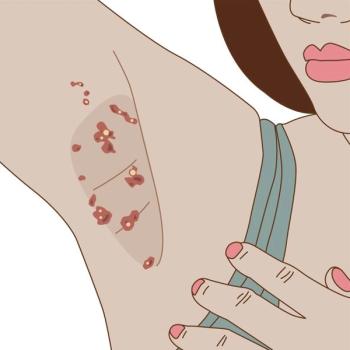
Allopurinol May Help Prevent First ACS Event in Patients with Gout
Allopurinol exposures of 100 mg or more than 100 mg were associated with lower odds of first-ever ACS with some differences between sexes, a new study reports.
Allopurinol use in patients with
Study authors, presenting during the
As context for their investigation the authors cite a growing body of evidence suggesting that beyond the association of gout with increased risk of
The team accessed data from both national and regional population-based registries in western Sweden and identified all patients between 2000-2017 with a first ICD-coded diagnosis for gout and no prior exposure to allopurinol. Potential participants with history of coronary heart disease were excluded.
The primary outcome of interest was occurrence of a first-ever ACS event, according to the study abstract. The investigators initiated follow-up at the first ICD-coded diagnosis for gout and ended after either the outcome event, death, emigration, or the end of study on December 31, 2017.
For the purposes of the study, allopurinol exposure was defined as none (no dispensed prescription within 125 days from the end of follow-up; reference group), 100 mg, or >100 mg, according to the last dispensed prescription within 125 days from the end of follow-up.
The team used logistic regression models with adjustments for age, sex, education level, comorbidity index, dispended prescriptions for cardiovascular drugs,
FINDINGS
The final cohort numbered 19 054 and two-thirds (67%) were men. Overall, women were older than men in all exposure categories and being prescribed allopurinol was associated with older age, longer follow-up time, and more comorbidities.
According to the study abstract, odds ratios (OR) for first-ever ACS events were significantly lower in both allopurinol exposure groups vs participants not exposed to the drug in the entire cohort (OR, 0.72; 95% CI, 0.59-0.88; and OR, 0.54; 95% CI, 0.40-0.72, respectively) as well as in men only (OR, 0.72; 95% CI, 0.57-0.92; and OR, 0.57; 95% CI, 0.40-0.79, respectively).
Among women treated with allopurinol, the odds of a first ACS event were not uniform. The study found that exposure to >100 mg was linked to a significantly lower OR for a first-ever event (OR, 0.46; 95% CI, 0.25-0.85), however exposure to 100 mg was not (OR, 0.72; 95% CI, 0.50-1.02).
The higher allopurinol exposure, investigators found, was associated with lower OR for first-ever ACS event than the 100 mg exposure in both men and women. Finally, across the cohort, the risk of a first-ever ACS event was similar in men and women.
“Current allopurinol use was associated with significantly lower risk of first-ever ACS event in patients with incident gout in a dose-dependent fashion, suggesting a protective effect for allopurinol,” the authors wrote. “The effect of allopurinol was similar in men and women.”
Reference: Drivelegka P, Jacobsson L, Bengtsson K, Dehlin M.
Newsletter
Enhance your clinical practice with the Patient Care newsletter, offering the latest evidence-based guidelines, diagnostic insights, and treatment strategies for primary care physicians.


















































































































































































































































































